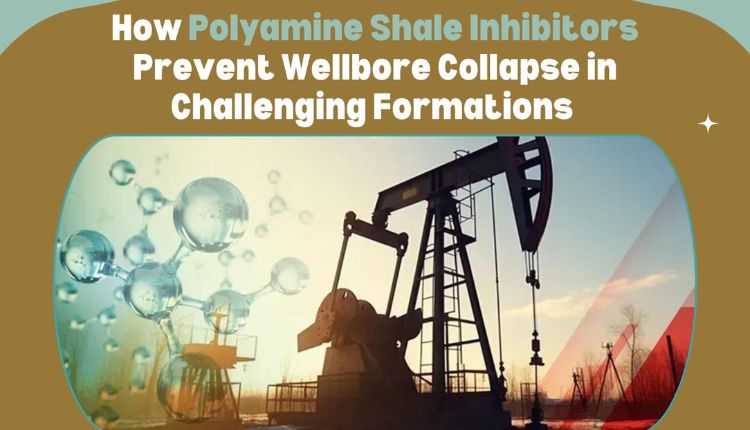How Polyamine Shale Inhibitors Prevent Wellbore Collapse in Challenging Formations

Shale formation can be tricky. Reactive. Unstable. If you are drilling through these zones, you know the risks—tight holes, pipe sticking, or worse, total collapse of the wellbore.
That is where Polyamine Shale Inhibitors come into play. These additives are not just chemicals – they are problem solvers. They help stabilize the formation and keep the drilling process smooth, even in water-sensitive zones.
But exactly how do they manage that? Let us break it down.
Shale Instability: What Really Happens Downhole
Imagine taking a dry sponge and soaking it in water. What happens? It swells. It loses shape. That is pretty much how shale behaves when it meets water-based mud.
Shale formations often contain clay minerals. These clays absorb water, expand, and start to crack or slough. Over time, the borehole becomes unstable. If it gets bad enough, the entire structure around the drill bit may start falling in.
And here is the kicker—most drilling fluids today are water-based. So, the challenge becomes: how do you protect the shale without changing the entire mud system?
What Makes Polyamine Shale Inhibitors Work?
Polyamines are not magic, but they are close. Chemically speaking, they are chemical compounds with multiple amine groups. When mixed into drilling fluids, they attach to the surface of the shale and form a thin, protective layer.
That layer does two big things:
1. It blocks water from entering the shale
2. It holds the shale particles together
The result? The formation stays intact. The hole stays open. And drilling goes on without constant interruptions.
Think of it like applying a waterproof coat on a wall. You are not changing the wall-you are just making sure it holds up when the rain hits.
Why Choose Polyamine Over Other Inhibitors?
Yes, there are other inhibitors—potassium chloride (KCl), glycols, and silicates. They have been around for decades. But here is why Polyamine Shale Inhibitors are gaining more attention today:
• Lower dosage, strong results: You do not need to overload the mud with chemicals. A little polyamine goes a long way.
• Better for the environment: Unlike KCI, polyamines have a lower environmental footprint.
• They play well with others: No complicated compatibility issues with your mud systems or other additives.
• They help with cleanup: Cuttings remain firm, not mushy. That means better transport and fewer stuck pipe incidents.
Practical Use in the Field
Here is what makes polyamines even more attractive: they are easy to use. No fancy tools, no new process. You just blend them into the usual concentrate-and you are good to go.
Need to adjust the concentration? That is doable. Need to fine-tune the formulation for a specific shale type or temperature? Most suppliers can create custom blends for that.
Whether you are drilling shallow wells or deep horizontals, polyamines adapt well.
What Happens When You Skip Inhibition?
Let us flip the perspective for a moment.
What if you don’t use inhibitors? What if the shale just absorbs water freely? Here is the likely chain of events:
• Swelling starts slowly
• The wellbore begins to tighten
• Drill string torque increases
• Eventually, the pipe gets stuck
• And then comes the costly part—non-productive time, maybe even sidetracking
All that from not controlling hydration. That is why smart drilling teams think ahead. They treat the formation before it turns into a problem.
Looking Ahead: Smarter Fluid Systems
As formation get tougher and regulations tighter, drilling fluids need to do more than just lubricate the bit. They have to stabilize, clean, cool, and comply.
Polyamine shale inhibitors fit well into that future. They do not require complex logistics, and they bring both performance and flexibility. More drilling contractors are now incorporating them as a standard part of fluid design, not just a backup option.
Some are even combining them with other advanced additives – like encapsulated lubricants or nano-sealants – to create next-gen mud systems that perform across multiple fronts.
Conclusion: A Reliable Solution for Real-World Drilling
Wellbore collapse is not a theoretical risk. It is a real change, and it may cost money, time, and sometimes the entire well.
Polyamine shale inhibitors offer a simple, effective line of defense. By keeping water out and holding shale together, they help keep operations safe and efficient.
They are not flashy. But they work. And is a business where small choices make a big difference, that is what matters most.
Author Bio
Ramesh Patel, Sales & Marketing Director at Minal Specialities, brings over 17 years of international experience with deep expertise in oil & gas chemicals and global market expansion.



